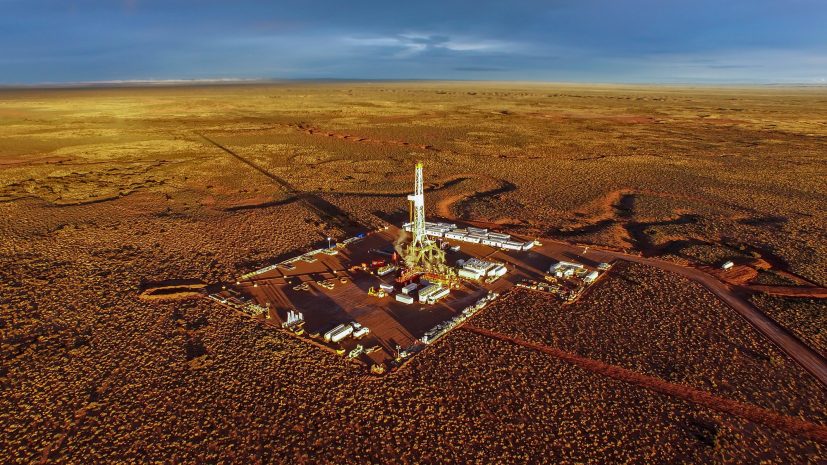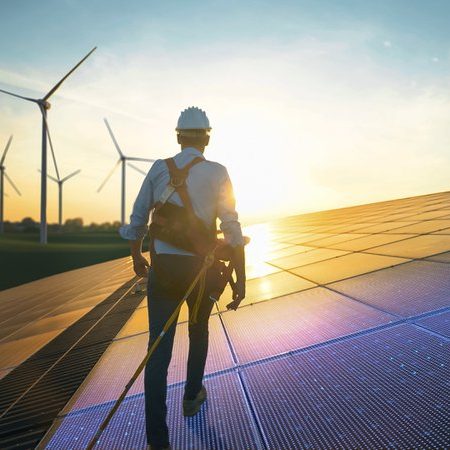The State of Affairs—US Fracking & Completions in 2024

Posted: October 16, 2023
Hydraulic fracking in the United States has undergone noteworthy changes in the past couple of years. With increasing costs, tight markets, and a drive towards cleaner oil field solutions, there has been no choice but for companies to adapt their business and operational strategies.
A rising demand for natural gas–powered solutions is disrupting fracking fleets traditionally comprised of Tier 2 diesel equipment. Operators are exploring new ways to increase customer value and reduce well costs through improved efficiency and non-diesel solutions. In addition, advances in completion tech, like simul-fracturing or dual frac, are improving performance compared to traditional frac operations.
In this article, we’ll take a deeper look at the current state of fracking. We look at major challenges, innovations, and potential opportunities for the sector in 2024 and beyond.

Unveiling the Potential: US Fracking's Impact on Energy Landscape
Fracking plays a significant role in shaping the current energy landscape in the United States. Forecast to grow at a CAGR of 7.4%, the global hydraulic fracturing market is estimated to expand from $52.1 billion in 2023 to $74.4 billion by 2028.
"The increase in shale gas—as well as oil production and exploration activities in North America—continues to fuel the US to be the largest player in the hydraulic fracturing market." – Jean-Louis Doguet-Gilmore's VP of Unconventional
With new technologies in horizontal drilling and hydraulic fracking, the US oil and gas industry is now expanding exploration and production activities in unexplored areas. As we look ahead to 2024, it's important to understand the ways in which this extraction method will continue to impact the industry.
- Increased Domestic Oil and Gas Production: Fracking has enabled the US to become one of the world's top oil and gas producers. This trend is expected to continue in 2024, with the industry unlocking more untapped resources.
- Energy Independence: The growth of fracking has contributed to the United States regaining its energy independence.
- Environmental Concerns: Despite its benefits, fracking has raised some concerns regarding environmental impact. In 2024, there will likely be increased focus on developing and implementing more sustainable fracking practices to minimize negative effects on air and water quality, as well as mitigate issues such as earthquakes.
- Economic Implications: The fracking industry has been a major contributor to job creation and economic growth. In the next few years, continued investment in fracking technology and infrastructure will drive further economic opportunities.
- Technological Advancements: As the fracking industry evolves, new technologies will emerge to improve efficiency, reduce costs, and mitigate environmental risks.
Industry Evolution: Navigating Shifts Through Mergers & Acquisitions in the Energy Market
Oil and gas M&As peaked almost a decade ago at 10%. Now, mergers and acquisitions constitute only 3% of the industry’s market capitalization. Prior to 2023, geopolitical events and economic instability contributed to global energy price fluctuations; and despite peak energy prices and low valuations, oil and gas M&A activity dropped to its lowest since 2008.
With mergers and acquisitions in the energy market becoming less dependent on oil prices, this suggests a key shift away from traditional strategies. Only 7% of such deals in 2023 are financed by debt, indicating that strong and efficient oil & gas companies have been reluctant to take on additional debt and mitigate potential interest rate increases.
2023 trends show that traditional M&A activity drivers such as acquiring for growth and increasing market share, have been replaced by the following new drivers:
1. Securing Energy Value Chains and Trade
Buyers have increasingly invested in liquid natural gas assets in the last two to three years. This move aims to capitalize on US export growth, higher prices in Europe and Asia, and secure the supply chain.
2. Clean Energy Assets
In the past 13 years, the oil and gas industry saw 500 deals worth close to $171 billion made for clean energy assets. Although solar and wind assets accounted for 44% of clean energy M&A during this period, biofuel-related assets are starting to draw investors. Since 2020, biofuel assets have gained investor interest, with $26 billion in deals.
3. Strategic Alliances to Build New Capabilities
Oil and gas companies are launching more joint ventures and strategic alliances in clean energy, particularly in hydrogen and related fuels (ammonia, nitrogen, sustainable aviation fuel). The types of clean energy projects have expanded beyond wind and solar to include a broader range of sources, fuels, and carbon-capture programs.
4. Scale and Commercialize Low-Carbon Businesses
Buyers are increasingly interested in sellers with a higher ESG profile. In more than 70% of deals over the past five years, seller ESG scores were higher than that of buyers. Trends reveal that micro to mid-sized companies tend to buy lower-ESG-profiled assets, while large independents and supermajors lean towards ESG-friendly assets.
M&A decisions will continue to be impacted by low-carbon oil and gas development and expansion into cleaner energy solutions. However, external factors such as the economy, interest rates, geopolitics, new policies, and regulations will always be an external factor to the overall activity levels.
Despite numerous role players, strong and efficient companies have the potential and opportunity to devise strategies to revolutionize the sector.

Cutting-Edge Efficiency: Elevating Fracking Operations with Gilmore's Upgrades
With the significant role of fracking in the current energy landscape, there is a great demand for new techniques and technological advances to reduce the costs of services and wells, improve efficiency, and transform completion speeds.
As a leader in essential flow control solutions, Gilmore has partnered with the International Association of Drilling Contractors (IADC) Advanced Rig Technology Committee to achieve next-level flow control innovation. The broad spectrum and highly specialized insights of IADC members allow us to back innovation with high-quality, technically sound qualification testing that accurately resembles real-world applications.
Considering the highly labor- and equipment-intensive nature of hydraulic fracking in severe service environments, we’ve designed the Agiliti™ product line to improve precision performance while dramatically decreasing maintenance intervals and improving efficiency.
The Agiliti™ valve advancements enable operators to achieve more stages per day, reduce operational expenditure across the frac spread, and ultimately boost profitability. Gilmore has developed the following frac valve advancements around unique technologies that significantly extend service life.
Agiliti™ Check Valve
The Agiliti™ Check Valve is a drop-in auxiliary to existing check valves in well-stimulation pressure control systems. The valve prevents backflow to upstream assets and features a service life exceeding 400 hours. Since no maintenance is required for the duration of a standard four-well pad, maintenance burdens and costs for pressure-pumping service providers are significantly lower.
Agiliti™ Relief Valve
The Agiliti™ Relief Valve provides accurate, automated, reliable, and industry-safe mechanical pressure relief. It is suitable to replace burst disks and inefficient relief valves in sand slurry and high-viscosity flow control applications.
Agiliti SAFEGUARD™
The Gilmore Agiliti SAFEGUARDPRO™ system has both pressure relief and pressure bleed capabilities. Because it’s a single system, its implementation significantly improves operational efficiency translating into substantial savings for service companies. Designed to optimize operational efficiency in the unconventional market, it features erosion- and corrosion-resistant materials in strategic places. Compatible with sand slurry mixtures and treated-produced water applications, its shear seal technology increases lifespan, while the modular component design offers easy refurbishment.
Enhancing Fluid Dynamics: How Large Bore Manifolds Optimize Fracking
Frac manifolds, primarily used for multiple well fracturing, are configured with flow fittings and valves to connect the frac pump output header (missile) to each frac tree. The manifold has multiple passages that are opened/closed by a frac valve on a dedicated supply line from the main line to the goat head of each well, enabling the operation of multiple wells. Using this arrangement, the manifold quickly isolates wells that have finished a frac cycle and redirects flow to a well ready for the next cycle, improving transition speed.
However, traditional frac operations constitute hundreds of moving parts and small-bore iron strings to control excessively high pressures. These complex setups involve time-intensive assembly and connection. Additionally, every connection poses a leakage risk and necessitates continual checking.
Large bore manifolds can significantly reduce the footprint and iron needed for fracking operations. With fewer lines, connections, and components, there are also fewer potential leak paths.
A single large-bore inlet attaches to the zipper manifold, which replaces multi-tie-in lines on a conventional fracking tree. This creates fewer turns and connections, which decreases labor costs, fluid turbulence, and safety hazards.
Benefits of Large Bore Manifolds
- Large bore technology allows large displacement and quick fracturing operation
- Easy connection with strong shock-proof capabilities
- Multiple configuration options for various layouts
- Increased fracturing efficiency at a lower cost
- Extended service life
- Reduction in operating torque
- Enhanced safety of operations
- Eliminates multiple fracturing lines

Mergers and Building a Community in 2024
The hydraulic fracking market is influenced by a few major players with wide regional presence. They implement strategies such as contracts, agreements, acquisitions, and expansions to drive product development, market diversification, and competitive gains. Considering the concentration of players, the following recent industry developments will have outsized impact on the fracking landscape over the next several years.
- ProPetro Holding Corp. signed an agreement in December 2022 with a leading Permian operator to implement ProPetro’s first e-fleet (electric-powered hydraulic fracking fleet). ProPetro’s service to the company will continue for three years following e-fleet delivery.
- On September 1, 2023, Patterson-UTI Energy, Inc. publicized the completion of its all-stock merger with NexTier Oilfield Solutions Inc., originally announced in June 2023. The merger establishes the company as a leading provider of drilling and completions services in the United States with 172 super-spec drilling rigs; in addition, its US Well Completions business has 3.3 million hydraulic fracturing horsepower.
- ProFrac Holding Corp acquired the privately-owned pressure pumping service provider REV Energy Holdings LLC in January 2023. ProFrac spent $140 million on the acquisition and will consequently expand its presence in the Rocky Mountains and South Texas.
- Just a year earlier, ProFrac also acquired the pressure pumping services company, Producers Services Holdings, LLC. The $35 million transaction expands their presence in Appalachia and mid-continent.
Building Bridges and Flavor: Connecting at the 6th Annual Daniel Energy Partners Cook-off
Industry events are key to fostering connections, collaboration, and networking among professionals within the hydraulic fracking market. Daniel Energy Partners, an independent energy market intelligence firm, is comprised of an exclusive team of managing partners focused on the Oil Service and Capital Equipment sectors. They are a valuable resource for companies succeeding in this market due to their field-driven data that provides real-time business trends.
One of the premier events held each year is the Daniel Energy Partners Permian Basin BBQ Cook-off. The invitation-only event for energy industry professionals gathers leaders from public and private energy companies as well as finance professionals, and investors in an enjoyable setting. This year’s event drew approximately 5,000 attendees and over 100 cooking teams at the Scharbauer Sports Complex in Midland, Texas.
As a leading event for the US oil and gas industry, it is a significant opportunity to establish relationships with new clients, support local charities, and enjoy authentic Texas barbeque. Gilmore participated for the third year in a row as a Backyard Cook team sponsor and looks forward to participating in more events next year.
Flow Control Innovation—2024 and Beyond
Thanks to the advancements in fracking technology, the US oil and gas industry has witnessed significant growth in recent years. Companies are investing heavily in research and development to improve extraction techniques and reduce environmental impacts. Experts predict that the industry will continue to expand in the coming years, creating new opportunities for investors and driving economic growth.
For over half a century, Gilmore has been an innovator in flow control solutions. With extensive experience and a track record of developing innovative, modular technologies, our flow control solutions stand the test of extreme settings. Operating conditions are becoming more demanding, requiring higher temperatures and pressures. Despite this, our engineering team continues to innovate prioritizing efficiency, safety, and reliability— fostering a sustainable and resilient energy future into 2024 and beyond.
In addition to drilling and unconventional market solutions, we provide production and downhole solutions, including hydraulic and pneumatic flow control valves for production control systems both topside and subsea. We also offer best-in-class cartridge valves for drilling and measurements and rotary steerable, and smart completions.
Designed to keep operations flowing for longer intervals between maintenance cycles, our solutions are changing the landscape of hydraulic fracturing equipment. Schedule a call and find out how we can help you keep productivity high while reducing operational costs.




